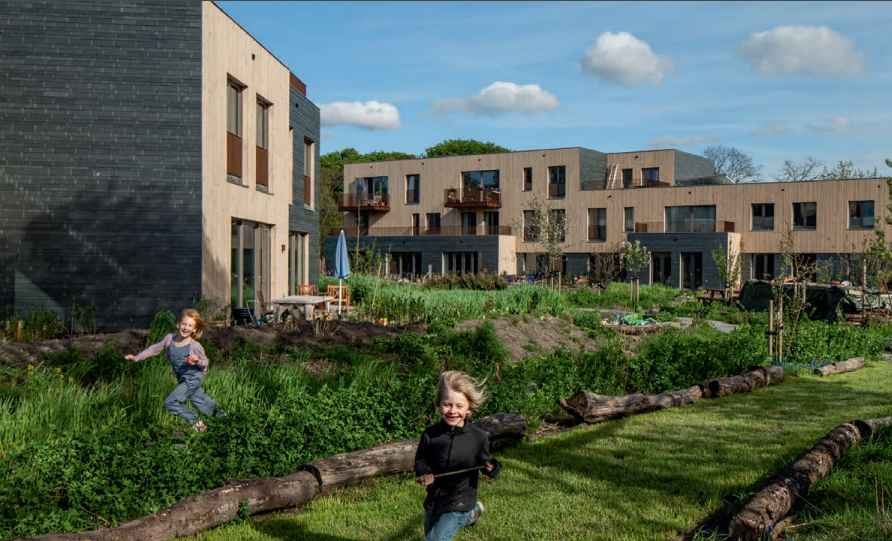Groene Mient, The Netherlands
The designer is Bos Hofman, HofmanDujardin is an architecture firm founded in 1999 and located in Amsterdam. The team
is specialized in architecture, renovations and interior designs.
Among many techniques they include community design of private and communal space using roof and bioswale systems for surface water collection and infiltration creating a communal garden.
The community is a CPO; collective privately
owned commissioned project. Each of the
33 owners bought their land individually but collectively developed the design
through an architecture firm. They embraced the social and ecologic values of
the Groene Mient Association to develop their project. These include energy neutral home
construction and energy self-sufficiency, non-fossil fuel use, use of natural
and sustainable materials, reuse of materials and water from the site, flexible
and accessible home design, and innovative technologies to achieve these goals.
They studied the soils and the ground water table and found that they could achieve water collection and infiltration to the groundwater level in a positive functional manner. So, they used techniques to collect and store the water on site to achieve these goals by using vegetated roof and porous paving systems to collect store and direct the water to a communal vegetated courtyard garden water feature called a wadi. Excess water was directed to an overflow area.
The whole project is designed to collect and reuse water and allow infiltration including the parking and walkways being made of gravel and crushed stone. They also used native plants with the courtyard garden. They achieved these goals together.
The only criticism I would give is that the street level view of the houses is very stark and lacking vegetation and friendliness.
The goals of social communal space is not fully achieved in this stark uninviting environment at the street. But they pass those issues when you enter the site and move between the houses into the natural functional beauty and social friendliness of the communal interior spaces.







No comments:
Post a Comment